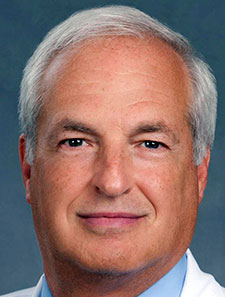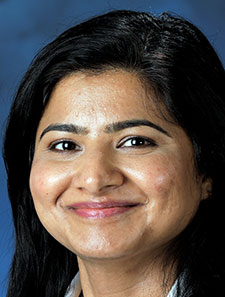 Every SHM special interest group (SIG) is focused on the future, but not every initiative is seeing the kind of growth trend lines of the society’s Perioperative/Co-Management SIG.
Every SHM special interest group (SIG) is focused on the future, but not every initiative is seeing the kind of growth trend lines of the society’s Perioperative/Co-Management SIG.

Dr. Pfeifer
“The tremendous value of the special interest group for perioperative and medical co-management is that even though this is growing in many, many places…usually there are one or two people who have been put in charge of it, or expected to direct it,” said SIG co-founder and chair Kurt Pfeifer, MD, chief of the section of perioperative and consultative medicine in the department of medicine at the Medical College of Wisconsin in Milwaukee. “And they may not feel like they have as much mentorship and support locally as they need to be able to effectively lead within this space. It’s so important for professional societies to help fill that void.”

Dr. Cohn
SIG co-founder and former chair Steven Cohn, MD, MACP, FRCP, SFHM, says that as co-management has transitioned from surgeons to hospital medicine leaders, the group has been helpful in answering the necessary questions.
“Who would be admitting? Who would be following? Who would take care of which problems when they came up?” said Dr. Cohn, a professor emeritus at the University of Miami Miller School of Medicine in Miami. “It expanded from orthopedics to other fields: neurosurgery, vascular surgery, ENT [otolaryngology]. And there’s actually medical co-management within the department of medicine, for example, for oncology. So, it’s expanded, and it continues to expand, as far as the co-management part of it goes.”
Whether it’s formally set up as co-management of a patient or more just perioperative discussions, the SIG continues to provide value to members even as they spend years involved.

Dr. Kalra
“When I started working in the perioperative space, I was all about learning how to manage complex conditions, but my learning has now evolved as I advanced in my career to lead our pre-operative clinic,” said SIG vice-chair Smita Kalra, MD, who directs the hospitalist-run pre-operative clinic at University of California Irvine Medical Center in Orange, Calif. “Now, I look for conversations that I might be having at the leadership level, and at the level I’m looking for advice on how I can handle a logistical problem better, or how can I handle my pre-op clinic census in a better way? I think we all are going to evolve in our own careers, so the questions we had a few years ago change as we grow, and our SIG can help bridge all of these questions.”
Dr. Pfeifer also sees the SIG as having great academic value, particularly as the hospital medicine field continues to mature.
“Establishing an identity and having some niche that they can work within is imperative if you’re an academic hospitalist, but is also very valuable for our hospitalists practicing in the community,” he said. “And within the SIG, we’ve been able to organize ourselves and help junior members in the group find and get connected with scholarship opportunities. Whether that’s within SHM, such as getting them authorship on our learning portal modules, or connecting them with others for doing review articles or other workshops, or even initiatives that are outside the society.”
Part of the group’s pedagogical passion is its monthly journal club, structured as webinars where an author of a timely study discusses the findings with the SIG.
“We’re getting hot-off-the-press articles in top journals, and we’re getting the lead author to actually voluntarily present to our group, taking an hour of their time at no fee … they just like to do it,” Dr. Pfeifer said. “And I think it’s really nice to be able to have these people present what they did, what their studies were, and have us, and our audience, able to ask whatever questions we have, because you can’t always get the information you want from the journal article. It’s somewhat unique that we have that ability.”
Dr. Kalra added that the webinars also give hospitalists a chance to work with other societies, further broadening members’ relationships and giving them a chance to learn from other specialties.
“We have collaborated with the Society of Perioperative Assessment and Quality Improvement,” she said. “We’ve had anesthesiologists present their work, we’ve had surgeons present. It gives us an opportunity to collaborate across different specialties as well, and they bring a unique perspective from their standpoint.”
Dr. Cohn says that moving forward, the SIG wants to capitalize even more on its popularity. The SIG is one of SHM’s largest, with more than 500 members.
“A lot of them are sort of passive learners, passive people, not actively getting involved,” he said. “What we would like to see is more and more people get involved, more people showing up for the webinars, more people responding to our question of the month. And more people are having just some chat and questions, and things like that, on our online message board. I think that would be helpful for everyone.”
Richard Quinn is a freelance writer in New Jersey.